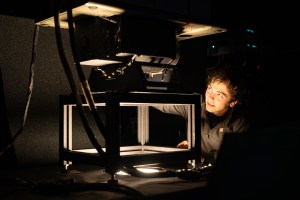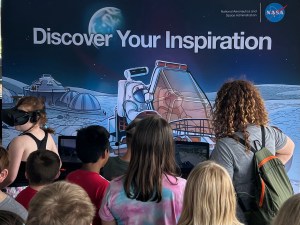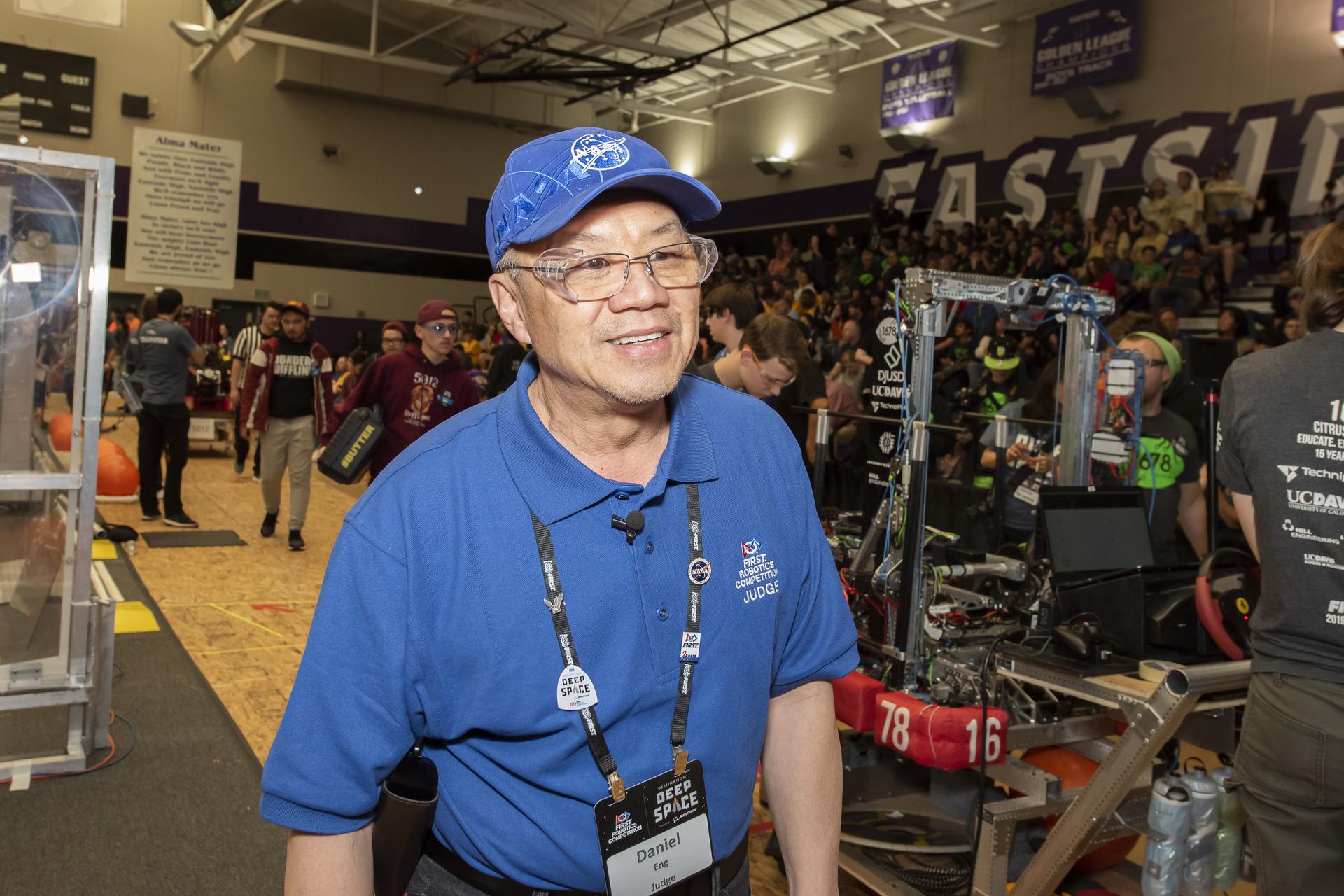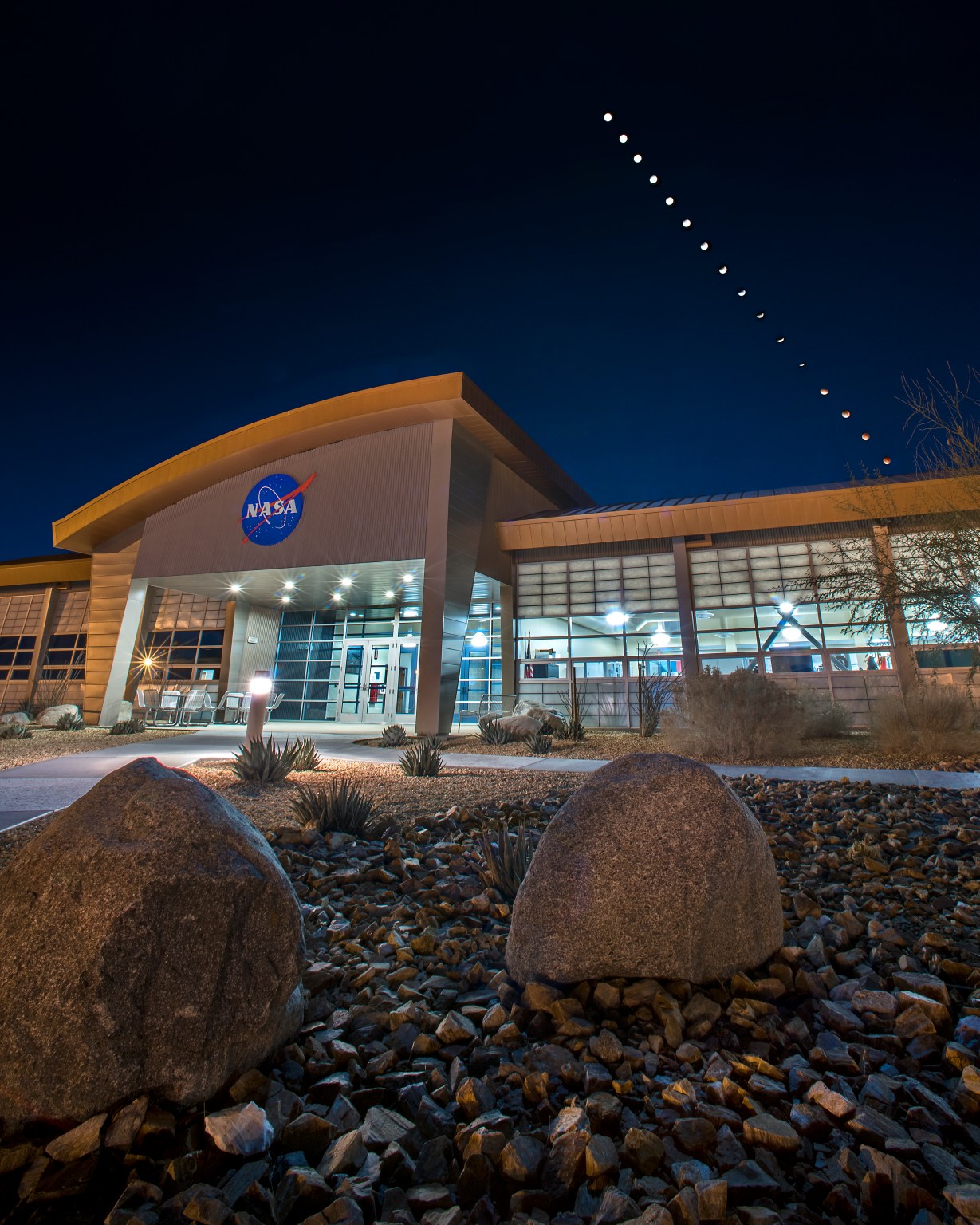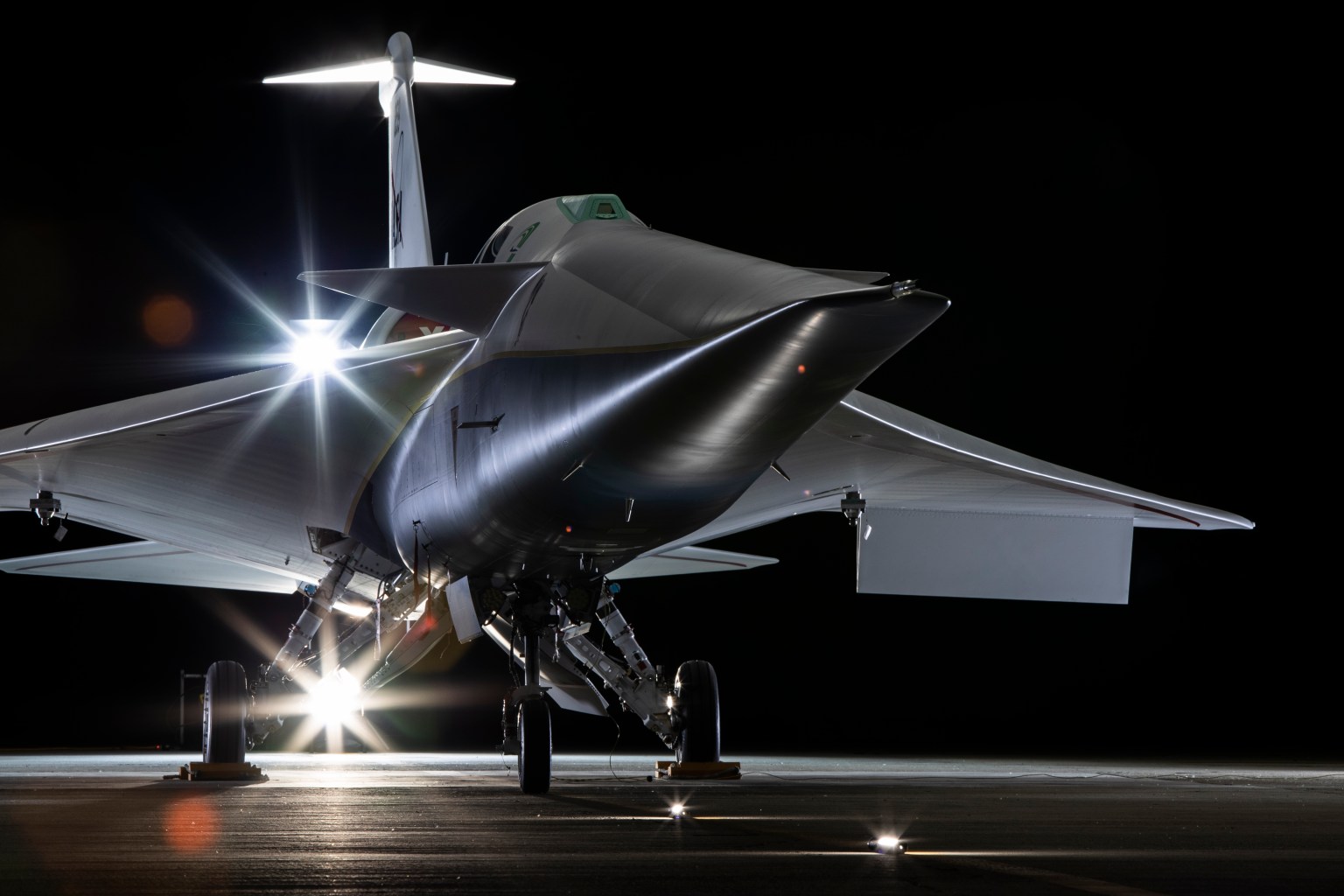High over the Mojave Desert, two NASA F-15 research jets made a series of flights throughout May to validate tools designed to measure and record the shock waves that will be produced by the agency’s X-59 quiet supersonic experimental aircraft. The F-15s, carrying the recording tools, flew faster than the speed of sound, matching the […]...
5 min read
Preparations for Next Moonwalk Simulations Underway (and Underwater)

High over the Mojave Desert, two NASA F-15 research jets made a series of flights throughout May to validate tools designed to measure and record the shock waves that will be produced by the agency’s X-59 quiet supersonic experimental aircraft.
The F-15s, carrying the recording tools, flew faster than the speed of sound, matching the conditions the X-59 is expected to fly. The X-59 is the centerpiece of NASA’s Quesst mission to gather data that can help lead to quiet commercial supersonic flight over land.
The team behind the successful test flight series operates under the Schlieren, Airborne Measurements, and Range Operations for Quesst (SCHAMROQ) project at NASA’s Armstrong Flight Research Center in Edwards, California. There, they developed tools that will measure and visualize the X-59’s unique shock waves when it flies at Mach 1.4 and altitudes above 50,000 feet. For a typical supersonic aircraft, those shock waves would result in a sonic boom. But thanks to the X-59’s design and technologies, it will generate just a quiet thump.
Cheng Moua, engineering project manager for SCHAMROQ, described the validation flight campaign as “a graduation exercise – it brings all the pieces together in their final configuration and proves that they will work.”
NASA began to develop the tools years ago, anchored by the arrival of one of the two F-15s – an F-15D from the U.S. Air Force – a tactical aircraft delivered without research instrumentation.
“It showed up as a former war-fighting machine without a research-capable instrumentation system – no telemetry, no HD video, no data recording,” Cheng said. “Now it’s a fully instrumented research platform.”
The team used both F-15s to validate three key tools:
- A shock wave-measuring device called a near-field shock-sensing probe
- A guidance capability known as an Airborne Location Integrating Geospatial Navigation System
- An Airborne Schlieren Photography System that will allow the capture of images that render visible the density changes in air caused by the X-59
Before the F-15D’s arrival, Armstrong relied on the second F-15 flown during this campaign – an F-15B typically used to test equipment, train pilots, and support other flight projects. The SCHAMROQ project used the two aircraft to successfully complete “dual ship flights,” a series of flight tests using two aircraft simultaneously. Both aircraft flew in formation carrying near-field shock-sensing probes and collected data from one another to test the probes and validate the tools under real-world conditions. The data help confirm how shock waves form and evolve during flight.
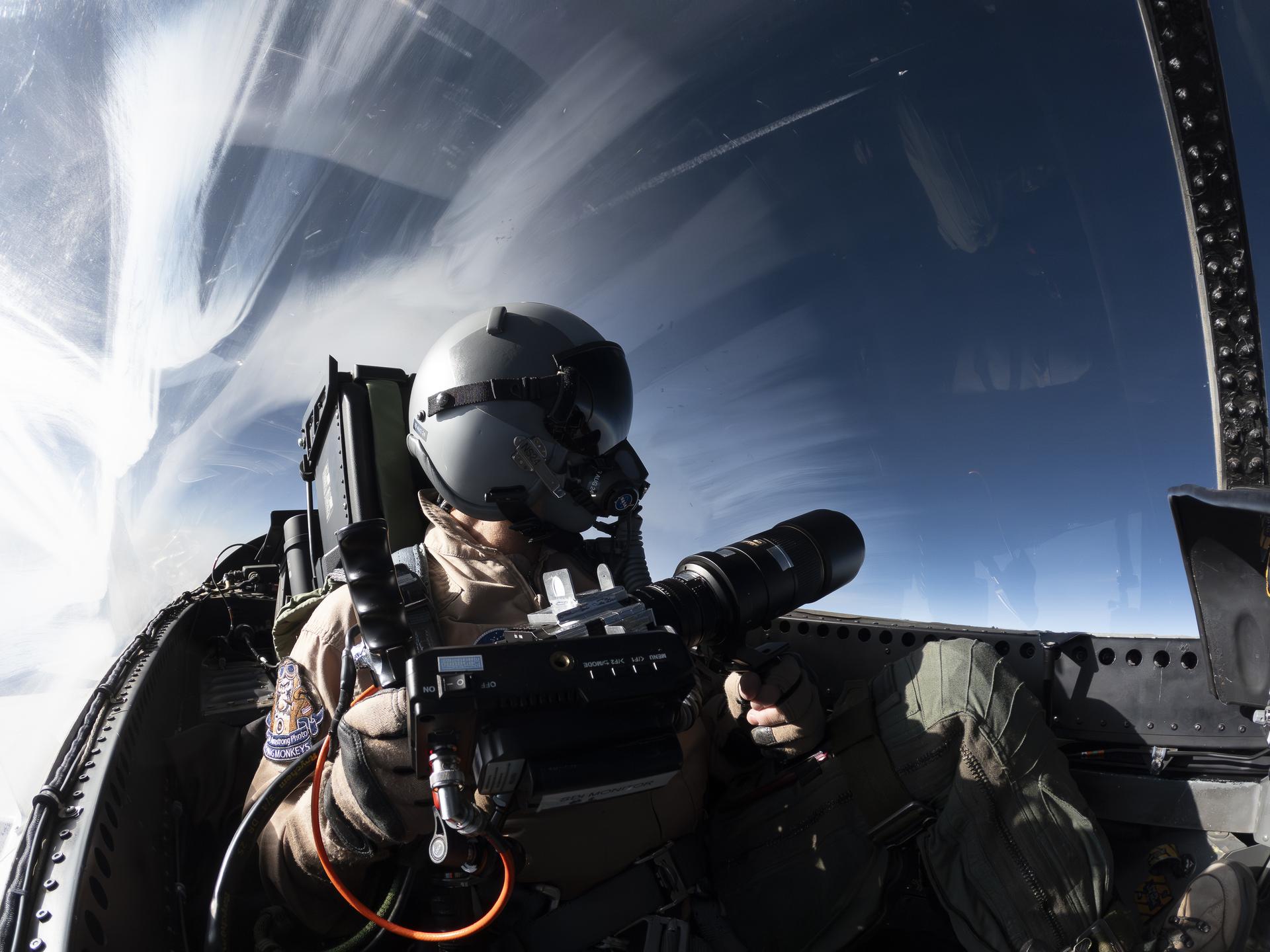
Keeping Things ALIGNed
For the Quesst mission, the F-15D will lead data-gathering efforts using the onboard probe, while the F-15B will serve as the backup. When flown behind the X-59, the probe will help measure small pressure changes caused by the shock waves and validate predictions made years ago when the plane’s design was first created.
The schlieren photography systems aboard the F-15s will provide Quesst researchers with crucial data. Other tools, like computer simulations that predict airflow and wind tunnel tests are helpful, but schlieren imagery shows real-world airflow, especially in tricky zones like the engine and air inlet.
For that system to work correctly, the two aircraft will need to be precisely positioned during the test flights. Their pilots will be using a NASA-developed software tool called the Airborne Location Integrating Geospatial Navigation System (ALIGNS).
“ALIGNS acts as a guidance system for the pilots,” said Troy Robillos, a NASA researcher who led development of ALIGNS. “It shows them where to position the aircraft to either probe a shock wave at a specific point or to get into the correct geometry for schlieren photography.”
The schlieren system involves a handheld high-speed camera with a telescopic lens that captures hundreds of frames per second and visualizes changes in air density – but only if it can use the sun as a backdrop.

“The photographer holds the camera to their chest, aiming out the side of the cockpit canopy at the sun, while the pilot maneuvers through a 100-foot-wide target zone,” said Edward Haering, a NASA aerospace engineer who leads research on schlieren. “If the sun leaves the frame, we lose that data, so we fly multiple passes to make sure we capture the shot.”
Aligning two fast-moving aircraft against the backdrop of the sun is the most challenging part. The photographer must capture the aircraft flying across the center of the sun, and even the slightest shift can affect the shot and reduce the quality of the data.
“It’s like trying to take a photo through a straw while flying supersonic,” Robillos said.
But with ALIGNS, the process is much more accurate. The software runs on ruggedized tablets and uses GPS data from both aircraft to calculate when the aircraft are in position for probing and to capture schlieren imagery. Giving pilots real-time instructions, enabling them to achieve precise positioning.
The X-59 team’s validation milestone for the schlieren imaging and other systems confirms that NASA’s core tools for measuring shock waves are ready to study the X-59 in flight, checking the aircraft’s unique acoustics to confirm its quieter sonic “thump.”
